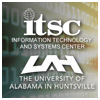Air Quality Science Supporting Decision Making for the Alabama Forestry Commission
| Title | Air Quality Science Supporting Decision Making for the Alabama Forestry Commission |
| Publication Type | Conference Paper |
| Year of Publication | 2011 |
| Authors | Nair, US, Keiser, K |
| Conference Name | UAH Atmospheric Science Dept. Weekly Brownbag |
| Date Published | 10/2011 |
| Conference Location | Huntsville, AL |
| Keywords | Dispersion modeling |
| Abstract | Air Quality Science Supporting Decision Making for the Alabama Forestry Commission The Alabama Forestry Commission (AFC) is tasked with administrating permits for prescribed (planned) burns, 1/4 acre or more, anywhere in the state. Primary considerations associated with issuance of burn permits include smoke management and also potential for uncontrolled spread of the burn. Two issues of concern for smoke management are adverse health impact and visibility reduction caused by smoke. High mass concentrations of smoke have the potential to adversely impact the health of children and the elderly. Smoke can also cause reduction in visibility leading to highway accidents such as the super fog event that resulted in the death of five people and 26 injuries along the Mississippi-Alabama border. Note that super fog is a condition where extreme degradation of visibility (less than 3 feet) caused by the combination of smoke and water vapor emitted from smoldering of wet fuel. Currently the AFC does not have access to forecast products or modeling systems to assist in decisions related to smoke management. The AFC currently uses a Smoke Dispersion Index (SDI) for smoke management decisions. While SDI provides information of effectiveness of atmospheric dispersion, it does not inform on visibility and air quality degradation. This project transitions smoke transport model, mesoscale atmospheric model and air quality model, all enhanced through the utilization of NASA Earth Science Research Results (NASA ESRR) for predicting air quality and visibility associated with prescribed burns. Through an interactive, web-based portal, these modeling systems provide visibility and air quality estimates for hypothetical burn scenarios. The web-based portal also allows the output from the integrated system to be blended with contextual information that is relevant to AFC, further enhancing decision support capability. The talk will focus on the design of the decision support tool and also future development plans. |
Involved Persons:
- Log in to post comments
- Google Scholar




